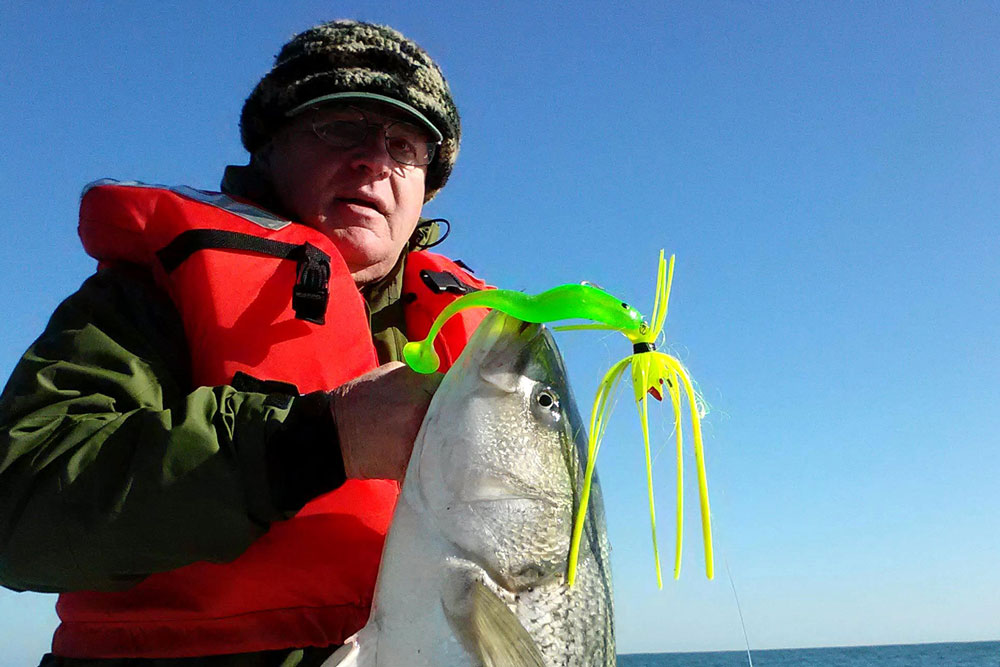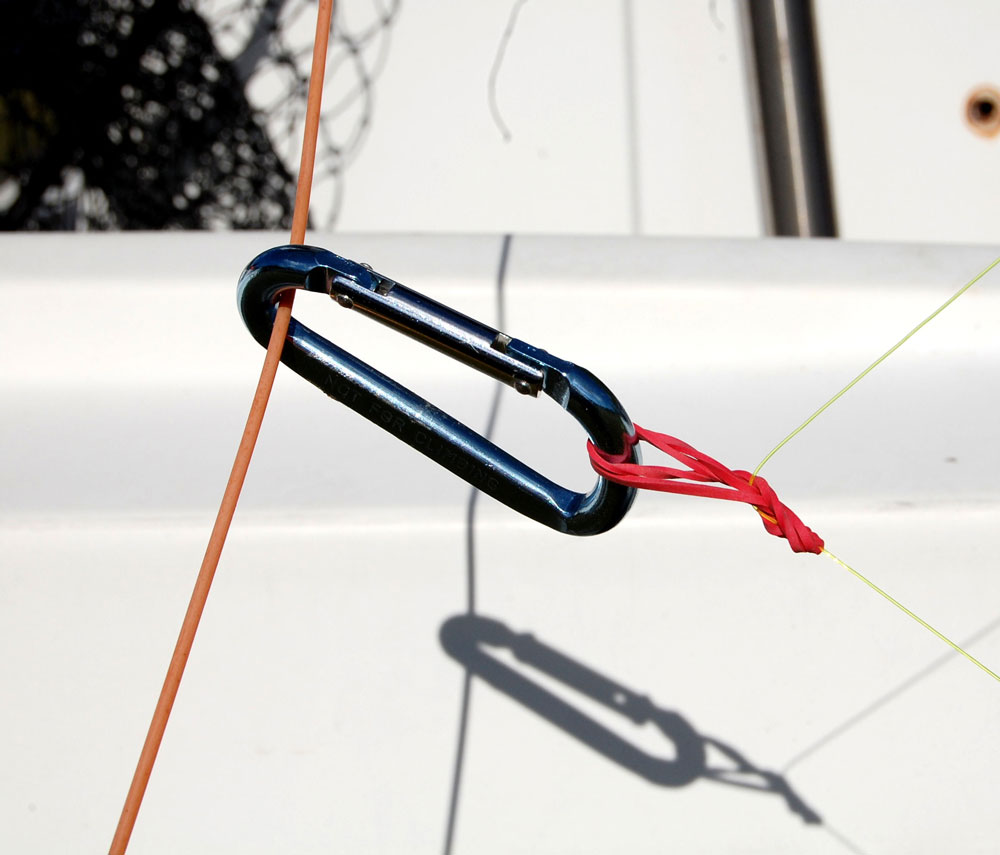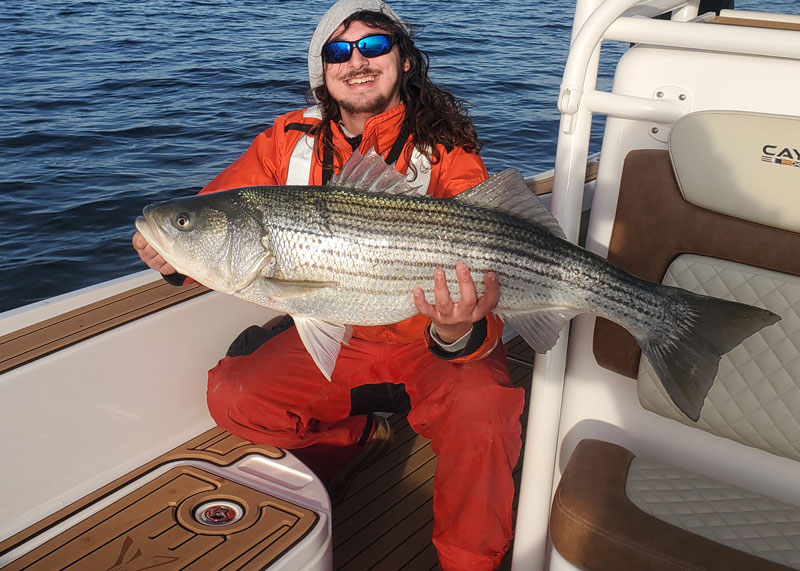Don't fall victim to those winter doldrums, and don't start winterizing your boat just yet, because a popular winter fishery takes place on the ocean side of the DelMarVa Peninsula: trolling for migrating ocean-run striped bass. As striped bass migrate south there's no telling exactly where they will pause, but somewhere between Maryland and North Carolina, there's bound to be good fishing.

How to Fish for Winter Striped Bass
Striped Bass will tolerate water temps in the mid to low 40s and are one of the last species to migrate south to their winter grounds, which can range as far south as the Carolina coast during colder winters. Some seasons the striped bass may over-winter in the Chesapeake Bay, which can create an epic December striped bass bite with action lasting into the new year and until water temperatures become so low the fish cease feeding. Light tackle anglers can get in on this too, as you can see in our video (shot in late December and early January of the 2023/2024 winter) from the Middle Chesapeake region.
Most seasons, however, the bulk of the striped bass stay in the ocean until it's time to migrate back inshore to spawn.
Federal waters are closed to this fishery, however, so trolling must be kept inside a three-mile limit from shore. Unfortunately, last year most of the fish stayed outside this line and were thick at locations like the Bass Grounds and Fenwick Shoals, at times mixed in with chopper blues. For those of us willing to brave chilly weather out on the open ocean to target these fish, that was pure torture. Hopefully this year they’ll move back in close to the beach.
Trolling speed is crucial when targeting these fish, and while three knots works with 50 degree water, once it drops down into the 40s and the fish become sluggish two knots will get your lures more attention. The migrating fish are often found in the vicinity of baitfish, which are also getting out of Dodge and heading for warmer waters. Fish typically feed in the direction they are swimming, so anglers may find an advantage by trolling southward.
On calm days planer boards can be used, just like over in the Chesapeake during the spring run of stripers. In fact, much of the trophy striper spring trolling spread is fairly similar to that used for winter striper fishing. Bunker spoons may be popular up north and they certainly will catch some fish up and down the coast, but most anglers fishing off DelMarVa troll a single three- or four-ounce bucktails and parachutes with a Sassy Shad tail. Along with the typical tandem rigs, some six- or nine-inch Sassy Shads are also run on deeper rods in conjunction. Tandem rigs have a lighter bucktail (commonly two to four ounces) used on the top leader, which is 12 or 13 feet in length. And a heavier bucktail (four to eight ounces) runs below off a three-way swivel on a five-foot leader. Many multiple colors of bucktails and Sassy Shad had been tried through the years, but the stand-by chartreuse, yellow, and white colors remain the clear favorites.
Trolling With Planer Boards
As mentioned earlier, when it’s possible pulling planer boards is highly effective (though rough ocean seas sometimes will prevent you from doing so). There are two methods of attaching fishing lines to the lines pulling the planers. The first is to use the popular clips often used in the Chesapeake. However, even when it’s calm enough to pull boards, much of the time the waves and larger swells found in the ocean makes the planer boards jump around quite a bit. Often this causes lines to pop out of the clips. In this situation, anglers may want to utilize rubber bands and D-clips to prevent this from occurring. When using the rubber band method, set lure the desired distance back and then twist a rubber band around the fishing line several times, before hooking the ends into a D-ring. Then attach the D-clip to the planer towline, and as line comes off the reel the clip slides toward the planer board. When you’re satisfied with its positioning, the reel is engaged and the rod is placed in a holder. Then when a fish strikes the rubber band breaks, allowing the fight to begin. The rods with lures set closest to the planer boards needs to be the highest rod on the boat. This allows the fishing line to clear the others rods after a bite, so the fish can be wound in without disturbing the other lines.

Winter Stripers often feed near the surface, since schools of menhaden find the sun’s surface warming effect to their liking. In other words, make sure several lures in the spread are near the surface. This is not to say fish are not caught deep too, so a spread with lures presented at different depths is advised until one or the other proves effective and the depth of the fish has been located. Again, look at it much like spring trophy trolling.
A typical spread has lures trolling at distances of 40 to 100 feet behind the planer’s tow line. Deeper and longer lines are set close to the boat, with shorter surface lures positioned out near the planer boards. Surface lures should be somewhere in the vicinity of four to 12 feet under surface. Gunwale rods fished behind the transom are set around 125’ and 150’.
Umbrella rigs are popular in the ocean too, and they certainly work well thanks to the principle of survival of the fittest. When feeding, fish normally attack the last fish or bait struggling to keep up behind the school. This is what the Umbrella rig simulates. It consists of several hook-less rubber shad or spoons on wire spreader imitating a school of menhaden. At the rear, a single bucktail or parachute dressed with a plastic shad is attached, to trail behind the school — the straggler those rockfish are looking to pick off. But remember that umbrellas and other rigs with lots of drag are best positioned from gunwale holders, as they commonly put too much stress on the line for use with the planer boards.
If you don’t have planer boards or the ocean is simply too rough to use them, those outriggers used for offshore pelagics during the summer work just as well for stripers. Just adjust the distance you set your lines at, so the lures can achieve their desired depth.
It’s impossible to predict exactly when the winter striper bite will happen along the DelMarVa coast. They may be around for months, or the fish could quickly pass us by and head into the Bay or continue south to the Carolinas. It’s also impossible to predict whether they will stay close enough to shore to make fishing inside the federal limit effective, or if they’ll school beyond the three-mile line. Naturally, we’ll do our best to keep you posted with up-to-date fishing reports at FishTalkMag.com right through the winter. That said, one thing is for sure: celebrating with a trophy-sized striper is an excellent way to ring in the new year.

By John Unkart, author of Offshore Pursuit and Saltwater Tales.
Editor's note: this article was originally published in December of 2017 and was last updated in December of 2024.